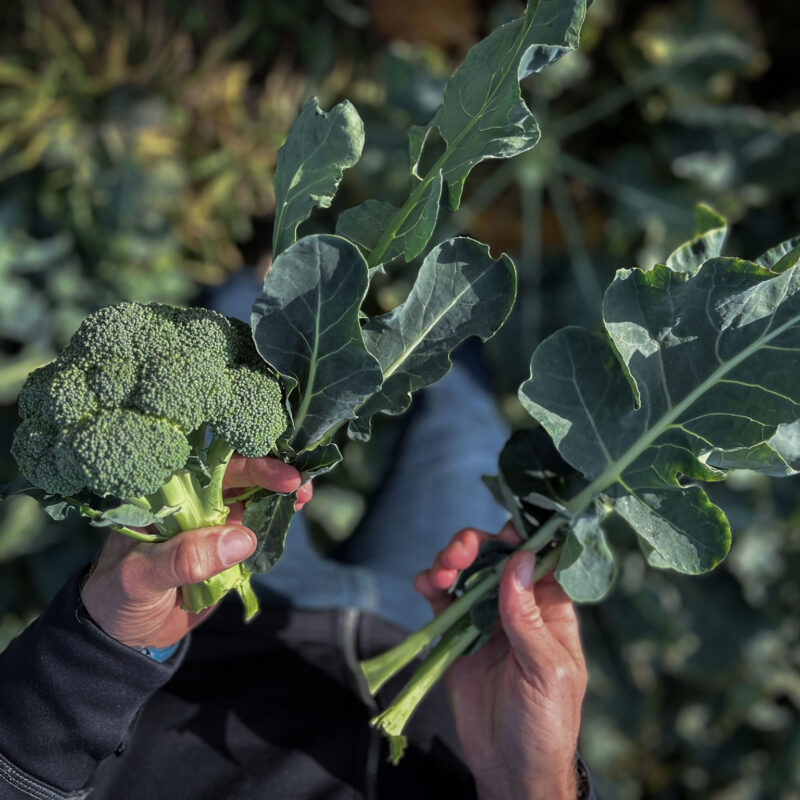Eating for a Healthier Planet: Key Takeaways from the New Nordic Nutrition Recommendations
2023.08.28
Sustainability Insights from Veronica Öhrvik: In June 2023 , the Nordic Council of Ministers launched the new Nordic Nutrition Recommendations. Over 400 researchers and experts summarized the latest science on food and health – and for the first time, environmental aspects are integrated. The work has attracted international attention and the WHO Director General says that the nutritional recommendations show “a powerful link between healthy people and a healthy planet”.

The "Sustainability Insights" is written by Veronica Öhrvik, Food Agronomist and a member of OECD Food Chain Analytical Network. She is also a Project Manager in the program area Future Food at Axfoundation.
Read the Nordic Nutrition Recommendations
Read abut the global response from WHO regarding the recommendations
What Are The Recommendations?
Sweden was one of the first countries to introduce national dietary guidelines that were sustainable for both health and environment . These came already in 2015 and now environmental aspects are integrated in the Nordic Nutrition Recommendations as well. In brief, the new recommendations imply that for the sake of our health, we should eat less red meat – a maximum of 350 grams per week, which is roughly equivalent to 3-4 hamburgers.
According to the Swedish Board of Agriculture, the current consumption of red meat in Sweden is around 530 grams per person per week. For environmental reasons, the intake of red meat should be considerably lower than 350 g/week. Instead, we should increase our intake of legumes, whole grains, fish, vegetables, fruit, berries and nuts.
What’s the Hot Topic?
In the debate prior to the launch of the recommendations in June, concerns were expressed by both politicians and lobbyists. Some argued that the recommendations for reduced meat consumption would constitute a significant public health experiment that risks “exposing large parts of the population to serious energy- and nutritional deficiencies”. However, it’s worth noting that it’s only since the 1990 s that we have been eating as much meat as we currently do. Before that, consumption was considerably lower, according to the Swedish Board of Agriculture.
Concerns were also raised that the recommendations would spell the end for Swedish livestock production. But given the amount of meat Sweden imports (the proportion of the meat we eat that is domestically produced varies from 28% (lamp and mutton) and 56% (beef) to 82% (pork)) there is room for robust domestic production even if meat consumption decreases overall.

The consumption of red meat needs to be reduced, according to the new recommendations.

Pasta Bolognese made from Swedish minced legumes with considerably lower climate footprint compared to minced beef.

Tacos with fritters made from Bream, an underutilized fish species from Swedish lakes.
What is Axfoundation Doing?
Today, very few individuals eat according to the Swedish national dietary guidelines. For example, fewer than 30% report consuming fish at least twice a week, and only 7.5% of school-aged youths report consuming more than the 500 grams of vegetables, legumes and fruits that are recommended per day according to the current dietary guidelines. As the new Nordic Nutrition Recommendations diverge even further from our actual eating habits (according to surveys conducted by the Swedish Food Agency and the Public Health Agency of Sweden (in Swedish)), it is obvious that dietary habits need to change. The pace needs to accelerate. Or as we at Axfoundation put it; we need to lay the tracks while we’re on the move.
Furthermore, the food environment must promote eating according to the recommendations – even from the perspective of the consumer’s financial situation. Thereby, sustainable and easily accessible foods are needed to make the easy choice the healthy choice.
Here at Axfoundation, we’ve identified a gap. There’s simply a lack of innovative products that help us adhere to the dietary guidelines while remaining sustainable throughout. As a consumer, you shouldn’t have to choose between biodiversity and climate, or between your health and your finances. You shouldn’t have to choose between what’s tasty and what’s sustainable. Everything must go hand in hand.
Torsåker Farm, Axfoundation’s center for future foo d, we work with partners to develop new innovations that are nutritious, environmentally sustainable and delicious. For example, the idea for Sweden’s first entirely locally grown and produced legume mince was born here on the farm. It contributes to a protein shift both on the plate and in the field. We have also developed fish mince and fish products using fish from sustainably managed fish stocks that haven’t traveled the world for processing and production before reaching your plate. This makes it easier for consumers to incorporate more fish and beans into their weekly diet while benefitting local small-scale fishing and reduce loss of biodiversity.
To sum up: More sustainable food innovations are needed to make it easier to follow the new Nordic Nutrition Recommendations. However, significantly improved prerequisites are also required for school kitchens, lunch restaurants and parents to do make the right choices.
/Veronica Öhrvik, Project Manager, Axfoundation
The Nordic Nutrition Recommendations in short
The Nordic Nutrition Recommendations are the scientific basis for national dietary guidelines in the Nordic and Baltic countries. When translating nutritional recommendations into dietary guidelines, factors beyond purely scientific considerations, known as “other legitimate factors” are taken into account. These factors can involve adapting to food traditions or how the food is produced.
The first Nordic Nutrition Recommendations were published in 1980 and have been updated approximately every 10 years since then. In the latest version, which represents the most comprehensive update to date, the following recommendations are made:
- A predominantly plant-based diet with a high intake of vegetables, fruits, berries, legumes, potatoes, and whole grains.
- Low-fat dairy products in moderate amounts.
- Limited intake of red meat and poultry.
- Minimal consumption of processed meat, alcohol and processed foods high in fat, salt and sugar.




























































